When I was small I used to sit in a shopping cart, eating almonds off of the pile in the grocery store, while Nonna shopped for food. She would hand me shelled almonds to snack on, but she would buy them in bulk, with their shells, and we’d crack them at home.
Shelling makes each nut a distinct effort, a ritual of extraction; learning the techniques, acquiring the strength to squeeze the nutcracker, to position the device over my plate so as not to spray the room with hard little shards of nutshell, all in order to get the creamy, savoury treat inside.
I don’t bother with that ritual anymore. I buy almonds that are already shelled, raw, from who knows where (maybe California?). It’s been a long time since I’ve seen an almond with its shell on and I’ve never seen an almond tree, I don’t think. I haven’t seen rows of almonds trees growing in Southern California, understood what nutrients their soil requires, their optimal growing conditions or what time is right to collect the nuts. I don’t have the callused hands and sun-weathered skin of a person who has dedicated their lives to farming almonds. And yet, I eat almonds almost every day. I sprinkle them on my salad, I use almond butter in my morning oats, I drink almond milk instead of milk from cows – it’s healthier, after all.
My body takes the nutrients from these nuts, collected at the grocery store, shoveled into a clear plastic bag and stored in a container in my kitchen, waiting to be packaged into lunch containers as nourishment for a long day at school.
I was recently reading a blog by a wonderful writer who posed this thought; “someone else gives you your body”. I think that this brings light some topics from Women’s Health Week at CCNM, in which we are supposed to celebrate our bodies with their different shapes and sizes and focus on being role models for our female patients, in a very female-dominated profession.
In one of our Women’s Health Week talks, it became very apparent that we are born into a society that tells us that we determine our present state and our future. We are the producers of our own good fortune. Therefore, an overweight person is lazy, a muscular person is firy and motivated and a thin person is disciplined and takes time for self-care. Our bodies tell our stories.
But do they?
We are often so disconnected from our bodies in a world where we don’t really need them in order to perform careers or daily tasks. School and work are often mental activities and we focus unproportionally on emotions. An acupuncture teaching assistant told me that, in China, people go to their acupuncturists with physical complaints. “My father died and I feel a tightness in my lung”, a patient might say, referring to his grief. He will be treated for grief and understands that the cause of his complaint is emotional, but he is more in touch with what that emotion feels like on the physical level. What does anger feel like? Where do I experience anxiety in my body? In the West we find that the answers to these questions are not readily accessible, ingrained in our daily life, but have to be thought about, meditated on and contemplated, with effort.
Few of us have experienced the steps it takes to get food to our grocery stores so that they become part of our bodies. The experience of obtaining the essential fatty acids of an almond by buying it and eating it is far removed from the experience of obtaining one’s livelihood or supporting a family on almond farming; caring for the land and almond trees like babies and humming while tending to them in the Californian sun. The seeds are planted, the saplings cared for, the soil nurtured and the nuts collected, shelled and ingested, fueling cells. In doing so, the almond farmer is connected to the nuts on his table, and their incorporation into his body. And me? Well, I don’t even crack almond shells anymore.
We want to believe that we are individuals and that our bodies and our lives reflect our own individuality. We support the notion that we are special, in control and independent. Everything about us reflects the individuality of our life choices. However, the chair on which I sit, the lipbalm that I apply to my chapped lips, the information presented to me in my classes, my clothes and the lunch in my reusable cloth bag were not made by me. Each item was created as a result of the life’s work of other people on who I am entirely dependent. Our health and life is dependent on other people.
If we truly “are what we eat” then every cell my body is obtained from the nutrients from food that I did not grow, pick or transport. Each food I have ever eaten is a representation of other people’s work. These people gave me my body. What could be more wholistic than that?

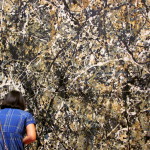

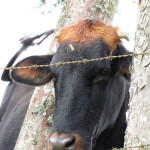
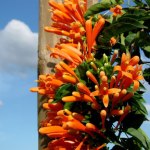
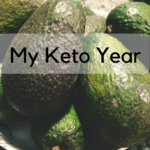
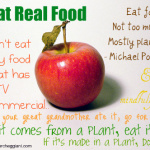
I appreciate the point on people in China tuning in to emotions on the physical level! This ties in very much with my practice and how I view patient care. I have actually been getting some very interesting emotional changes from some of my patients through manual therapy.
Someone else always gives us our body. From conception until we are weaned from our mother we are almost 100% made up of our mother’s body. We all rely on others to help us maintain our lives. I really appreciate that insight Talia. Good writing (as always).
Exactly! Even in terms of being a healer and having the manual therapy “happen to someone else” or even exercise and yoga. The benefits come from the outside world, from techniques that were adapted by generations of other people, but also from the oxygen we breath, which fuels us and is taken from a place outside of ourselves and the glycogen formed and stored in our bodies, obtained from the food other people grew for us. There really is no concept of independence when it comes to life and health. Thanks for commenting!
Beautiful piece. Surprising conclusion. A class perspective on naturopathic medicine: you’re gonna get arrested!
Well, Nandy it was your micro lecture objectives that served as my inspiration. Thanks for that. As for getting arrested: I have a fantastic lawyer. I’ll fight the fight!
Beautifully written – and you got me craving almonds!
Thank you! I’m glad you found me!
Actually, almonds are no longer raw. US & Canada governments require almonds to be processed with high temperature steam. The reason for this is to break a cyanide glycoside constituent that was taunted as Cancer Curing… Ever heard of Amygdalyn? Well, that also explains why almonds nowadays are not shelled. God knows what other nutritive ingredients get degraded in the process. As for the tree, I don’t think you can get an almond tree or “fertile seeds”, their possession must be highly guarded by the gvmts.
Wow. Reality is so un-poetic…